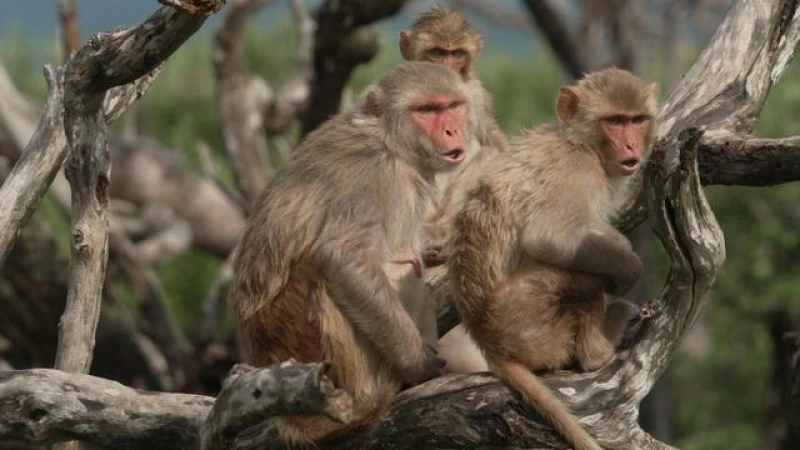This is an updated version of a story first published on Nov. 5, 2023. The original video can be viewed here.
As extreme weather events become more frequent worldwide, a rare Category 5 hurricane struck Mexico, causing significant damage. However, there is one island that has remained relatively stable in terms of its environment until recently.
Known as Cayo Santiago, or Monkey Island, this island has been a natural laboratory for approximately 1,800 monkeys. These monkeys live in isolation, providing researchers with a unique opportunity to study their behavior and biology. It is a halfway point between captivity and the wild.
Unfortunately, six years ago, Monkey Island was hit by a devastating storm. In order to assess the impact and study the monkeys' health, Lesley and her team underwent tests for tuberculosis, measles, and COVID before being granted permission to visit the island.
Recreated News
Biologists are conducting a long-term research project, which includes James Higham from NYU and Noah Snyder-Mackler from Arizona State University.
Lesley Stahl: What's the average lifespan?
Noah Snyder-Mackler: The median lifespan for females on the island is about 18 years. For males, it's around 15 years.
Lesley Stahl: Do they have any predators?
James Higham: There are no predators here.
Another interesting aspect of life on the island is that the monkeys are served their meals every morning. Researchers have observed a hierarchy, with the highest-ranking monkeys getting to eat first.
James Higham: I've even seen high-ranking individuals approach a low-ranking individual who is eating food, open their mouth, take the food out, and then close it (laugh).
Lesley Stahl: No way.
James Higham: Yes, it happens (laugh).
Lesley Stahl: What do they eat?
Noah Snyder-Mackler: They eat Purina Monkey Chow (laugh).
Lesley Stahl: There's Monkey Chow?
Noah Snyder-Mackler: Yes, it's made by Purina.
James Higham: That's right.
Noah Snyder-Mackler: Yeah.
Lesley Stahl: Oh my goodness—
Rhesus monkeys are often used for medical research due to their close genetic and physiological similarities to humans.
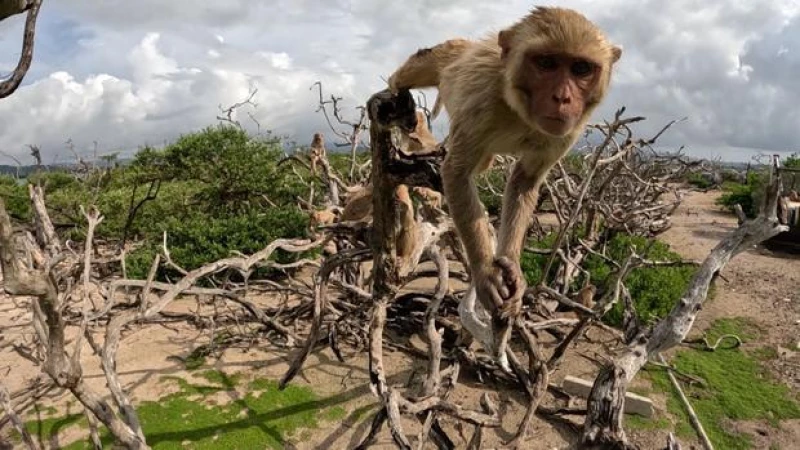
Scientists Discover Surprising Similarities Between Humans and Rhesus Macaque Monkeys
These rhesus macaque monkeys, originally from India, share striking resemblances to humans in terms of their physical and biological characteristics. They possess systems, such as eyes, lungs, and hearts, that closely resemble our own.
The journey of these monkeys to the United States began in 1938 when American primatologist Clarence Carpenter brought 500 of them on a grueling 14,000 mile sea voyage that lasted 51 days. Carpenter's intention was to establish a naturalistic research facility to study the monkeys' social and sexual behaviors.
The early years on the island were challenging for the monkeys, with many succumbing to diseases. However, enough of them survived, and by the 1950s, scientists started tattooing them and conducting daily censuses.
Thanks to this meticulous record-keeping, scientists now have access to over six decades of biological and behavioral data from these monkeys, all of whom are descendants of the original group. This unique dataset has provided valuable insights into their adaptability and behavior.
Researchers have discovered that these monkeys are highly adaptable, quickly acclimating to their new environment. They have also observed instances of aggression, particularly during food-related interactions and the mating season.
When it comes to intelligence, the monkeys exhibit social intelligence and form strong relationships with their best friends and family members.
Overall, these findings highlight the surprising similarities between humans and rhesus macaque monkeys, shedding light on the fascinating world of primate behavior.
Noah Snyder-Mackler: Some close friends – some best friends, right.
Rhesus monkeys live in female-led societies: mothers, daughters, aunts and grandmothers stick together in groups, while the males leave when they reach maturity and join other troops for breeding.
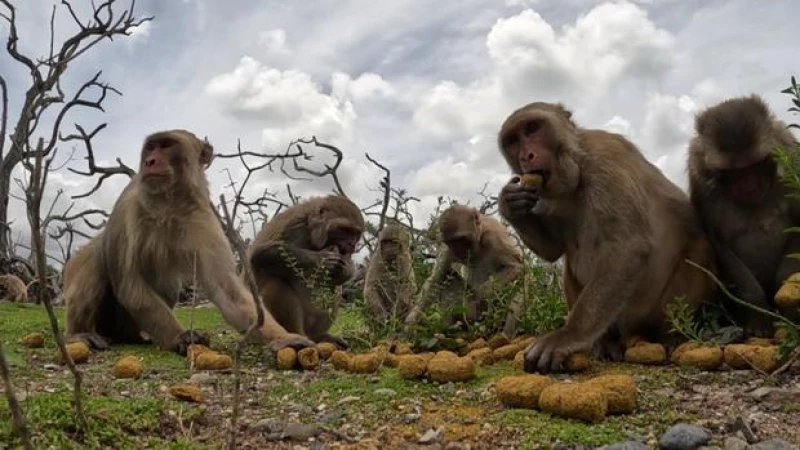
Few people know the troop tensions and allegiances better than research assistants Daniel Phillips and Josue Negron who've worked on Cayo for years. They arrive every morning by boat at 7 a.m. and for the next seven hours, they document things like aggression, grooming, vigilance and feeding.
Lesley Stahl: Do you ever get to know individuals? In other words, you know that monkey versus that one?
Josue Negron: Yeah, we-- we need to recognize them right away. Because I need to know like, who is interacting with who, how they, like groom each other, or attack each other.
Lesley Stahl: And how can you tell the difference? What are-- what are the characteristics that you see?
Daniel Phillips: You can see the differences on even how they walk, how they move- Their even-- faces have differences
Lesley Stahl: In other words, their faces become as ordinary in a way to your eyes as human faces?
Josue Negron: Yeah.
Daniel Phillips: Yes.
Josue Negron: You can recognize even families.
Two researchers, Daniel Phillips and Josue Negron, were discussing the familiarity of someone's face when they realized that the person in question might be the son of a woman they knew. This conversation took place amidst a significant event that changed everything for their research and the monkeys they were studying.
In September 2017, Hurricane Maria struck Puerto Rico with winds reaching up to 155 miles per hour. The hurricane caused widespread destruction, including the devastation of the power grid and communication systems. It also resulted in the loss of nearly 3,000 lives.
As a result of the hurricane, the research team, including Angelina Ruiz-Lambides, the then-scientific director of Cayo, was unable to reach Monkey Island. Angelina, who was seven months pregnant at the time, sought shelter with her family outside of San Juan.
With no news about their colleagues or the monkeys, James Higham and Noah Snyder-Mackler came up with a solution. They hired a helicopter two days after the storm to survey Cayo and gather information about the situation.
The team enlisted the pilot to fly over the island and answer a list of questions they had prepared.
During this challenging time, Angelina Ruiz-Lambides and the team feared for the monkeys' survival.
Angelina Ruiz-Lambides, a passenger on a helicopter, was shocked by the devastation caused by the hurricane. She captured footage of the destruction, witnessing years of work completely flattened. The once lush and green island of Cayo had turned into a brown wasteland, with two-thirds of its vegetation lost.
Heartbroken by what she saw, Angelina wanted a closer look and got back on the helicopter. To her surprise, she spotted a social group of monkeys running from the helicopter. She estimated that there were around 300 to 400 monkeys, out of the original 1,700.
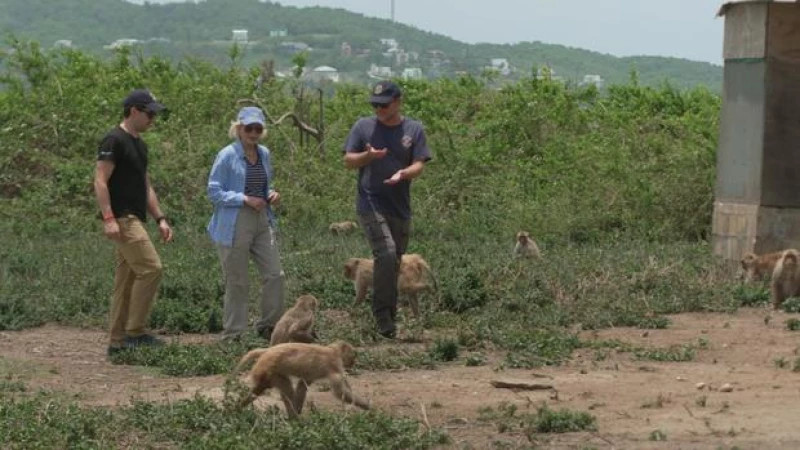
However, when the staff returned to the island and conducted a complete census, they discovered that most of the monkeys had survived. Only about 50 had perished in the hurricane.
Lesley Stahl: And you're wondering, "How did they survive this?" How did they?
Angelina Ruiz-Lambides: How did they survive this?
It's still a mystery. What strategies did the monkeys employ to weather the storm? Where did they seek shelter from the wind? And what did they eat?
Lesley Stahl: So, one of the main questions is how were they nourished without being fed?
James Higham: Yeah, so, although the hurricane significantly reduced the vegetation on the island, it also brought a large amount of seaweed and algae. One possibility is that the monkeys started eating more of this type of vegetation.
Which they still seem to enjoy.
After the hurricane, the monkeys had to adapt to a new, much harsher environment. Their natural adaptability definitely played a role.
Six years after the storm, the adjustment continues.
Efforts to replant the trees have been hindered because the monkeys -– always curious about anything new in their surroundings-- uproot them before they can grow, so now there is very little shade.
Lesley Stahl: This area used to be densely forested, right?
Noah Snyder-Mackler: Lots of space and shade.
Monkeys Adapt to Changing Environment
A recent study conducted by researchers at a primate research center has discovered some fascinating changes in the behavior of rhesus macaque monkeys. Due to the changing distribution of shade in their habitat, the monkeys have been forced to gather in a few shaded areas.
Surprisingly, this change in their environment has led to an increase in social behavior among the monkeys. They have become more tolerant of each other, which initially seemed counterintuitive.
James Higham, one of the researchers involved in the study, commented on this unexpected finding. He compared it to examples of humans coming together in times of scarcity and adversity, highlighting the duality of human nature.
Noah Snyder-Mackler, another researcher, also mentioned how the people of Puerto Rico exhibited similar behavior during a challenging event, emphasizing the capacity for kindness and compassion in both humans and monkeys.
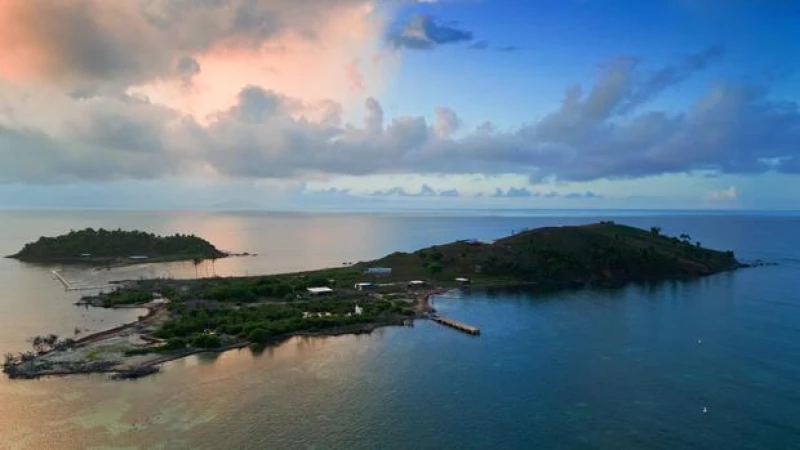
Lesley Stahl: They experienced an aging effect of six to eight human years?
Noah Snyder-Mackler: Yes, their immune systems showed signs of aging an extra two years.
Lesley Stahl: That's astonishing. And this was all due to the trauma they went through?
Noah Snyder-Mackler: On average, yes. Our current research focuses on understanding why some individuals were more resilient to the hurricane.
Lesley Stahl: Could it be that their friendships played a role in their resilience?
Noah Snyder-Mackler: We believe that individuals with stronger bonds and friendships may have been protected from the extreme stress of the event.
The hurricane has opened up new avenues for research, including predicting who will survive and recover quickly from natural disasters like earthquakes and hurricanes.
Researcher Noah Snyder-Mackler believes that studying climate-related trauma in primates could provide insights into how humans can better survive and cope with similar situations. He points out that humans and primates share a strong similarity, and therefore the strategies and behaviors that primates use to be more resilient could be applicable to humans as well. This research could potentially lead to interventions and strategies that help humans buffer against the negative effects of traumatic events.
Produced by Ayesha Siddiqi. Associate producer, Kate Morris. Broadcast associate, Wren Woodson. Edited by Craig Crawford.

